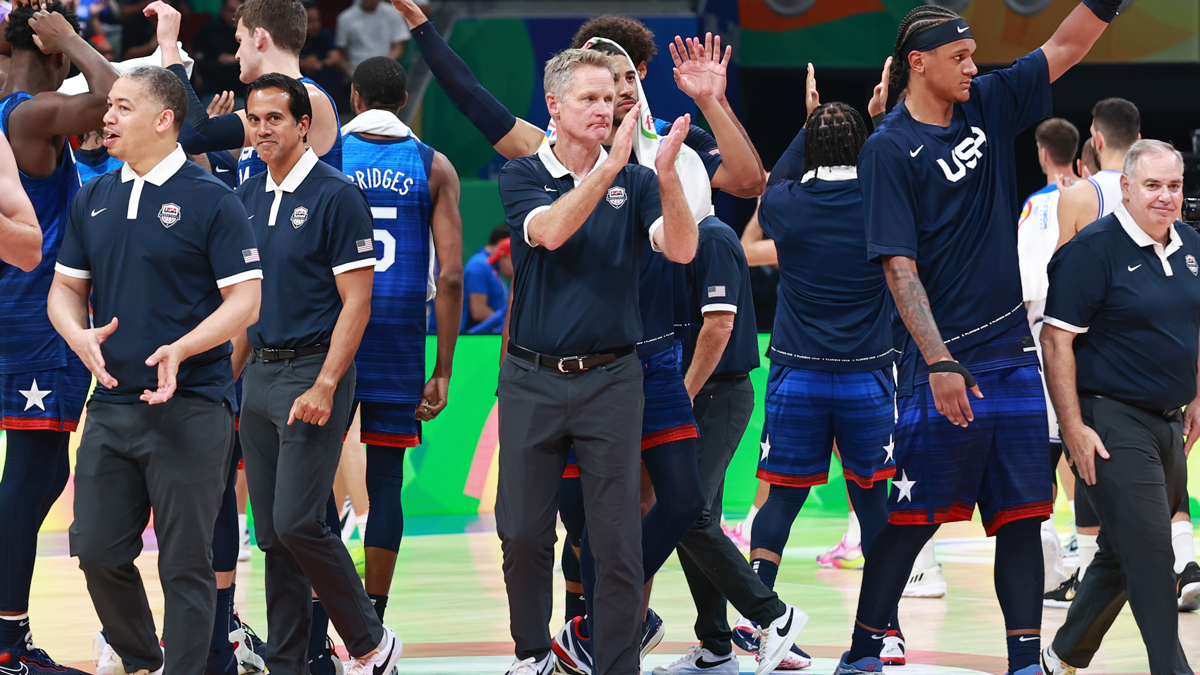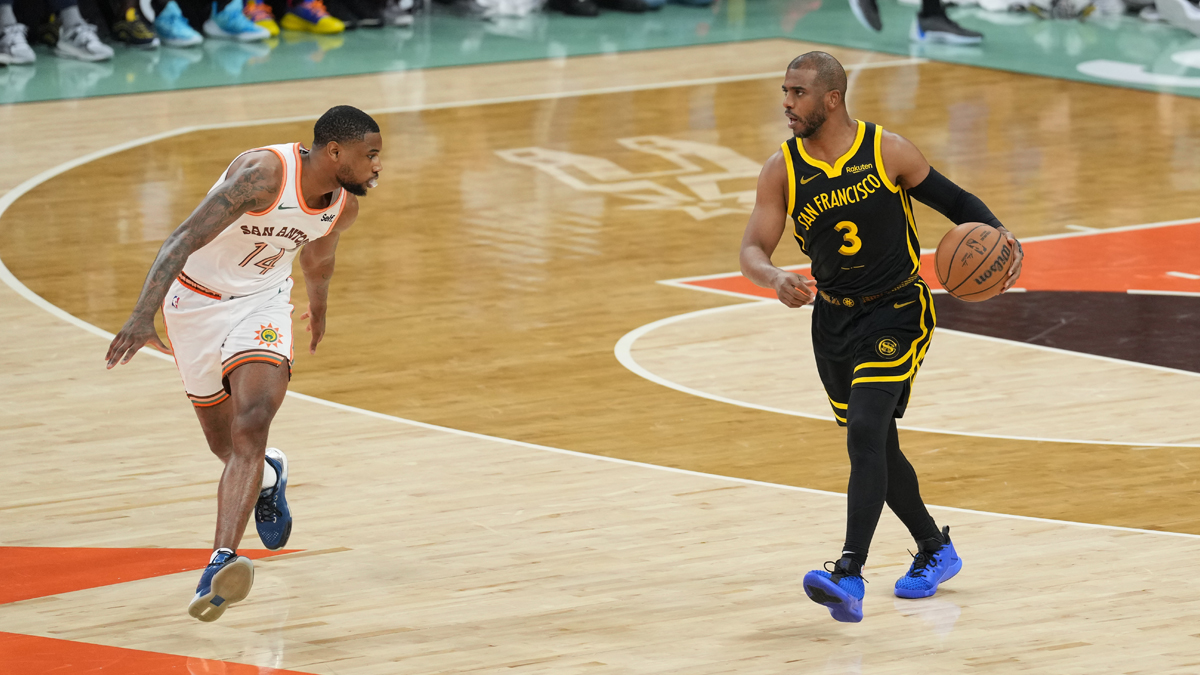SAN FRANCISCO – After returning to the Bay Area last May, having been ousted from the NBA playoffs, the Warriors’ first order of business was to bandage the wounded pride that comes with losing to a lower-seeded team in, for crying out loud, the second round.
The second order of business was for coaches and personnel executives to fully evaluate the postseason, which sent them sprinting into the laboratory in search of solutions to the problems caused by the Lakers.
“A lot of good against Sacramento, coming back, showing the resilience to come back after being down 2-0, winning a Game 7 on the road, showing our fortitude,” coach Steve Kerr said Friday.
Stay in the game with the latest updates on your beloved Bay Area and California sports teams! Sign up here for our All Access Daily newsletter.
“And then the Lakers exposed us.”
After slipping past the Kings in the first round, winning Game 7 on the road behind a 50-point outburst by Stephen Curry, Golden State was chilled by the schemes devised by Lakers coach Darvin Ham and his staff.
The raw numbers submitted by key Warriors were ghastly. Stephen Curry – the focus of the Los Angeles defense – was restricted to 43.9-percent shooting from the field, including 34.3 percent from deep. Klay Thompson shot 34.3 percent overall, 38.1 from deep. Andrew Wiggins posted a 45.2/33.3 split, while Jordan Poole limped in at 34.5/25.0.
Los Angeles, with mostly inferior shooters, was more accurate than the Warriors from the field (47.7-44.2) and from 3-point distance (35.7-35.4). When the Lakers swarmed Curry, which was often, Thompson and Wiggins struggled to make them pay, and Poole was at his worst.
Golden State Warriors
“We were not a very well-rounded team last year,” Kerr said. “Thinking about that series, watching it, they bottled us up defensively. And we didn't have a counter.
“So, we’ve got to make sure we have counters this year.”
Thus began the roster turnover. The veteran starting lineup – Curry, Thompson, Wiggins, Draymond Green, Kevon Looney – remained intact, but the youthful portion of the roster was thinned by the departure of Jordan Poole and Donte DiVincenzo, the sixth and seventh men.
The primary “counters” acquired this summer are Chris Paul and Dario Sarić, veterans whose skills complement those of the traditional starting lineup while also nurturing those of Jonathan Kuminga and Moses Moody, lottery picks from the 2021 draft.
This training camp, the first phase of which ended Friday, is about integrating the significant changes within Golden State’s roster.
The most important might be the interplay between Curry and Paul. It took two months before Kevin Durant and Curry found traction, and now CP3 is early in the process of finding his way.
“It’s the speed that Steph plays with, and his ability to shoot the ball,” Paul said. “I’ve played with a lot of really, really good players. But his ability not just to shoot but to create off the dribble, and to make the pass . . . also the other guys around, it’s been a lot of fun.
“You just sort of figure it out as you go.”
CP3 slinks through defenses with careful, deliberate navigation; he mostly decelerates. Steph attacks with constant movement, and constant acceleration. Whereas Poole’s approach in many ways mimicked that of Curry, the contrast between Paul and Curry gives a defense two completely different styles to cope with. Each is a “counter” to the other.
As the two vets work together during and after practice, the blending process is coming along, according to Steph.
“(Paul) obviously plays a certain way, and I play a certain way,” Curry said Thursday. “There’s a challenge there. I’ll lead a certain part of the workout. He’ll lead a certain part of the workout. And we can sharpen the tool kit that way.
“Over time, I’m sure there will be times when we do stuff individually just based on our needs. But it’s really good now in terms of the pace and the work we’re trying to put in.”
That last true counter to Curry, as a point guard, was Shaun Livingston, who retired after the 2019 season. Lacking Curry’s shiftiness, Livingston thrived by seeking exploitable matchups for teammates or himself. Each of Livingston’s five seasons with Golden State ended in the NBA Finals.
What worked for the Warriors from 2015 through 2019 was not available to them last season. Though it was good enough to win a championship in 2022, it faltered in ’23.
“The ability for us to adapt on the fly within games, no matter who the lineup is, has got to be our strength,” Curry. “That’s what the scenario calls for.”
That was the decision the front office members made in the lab. Whether it’s the solution will be discovered in the coming months.


